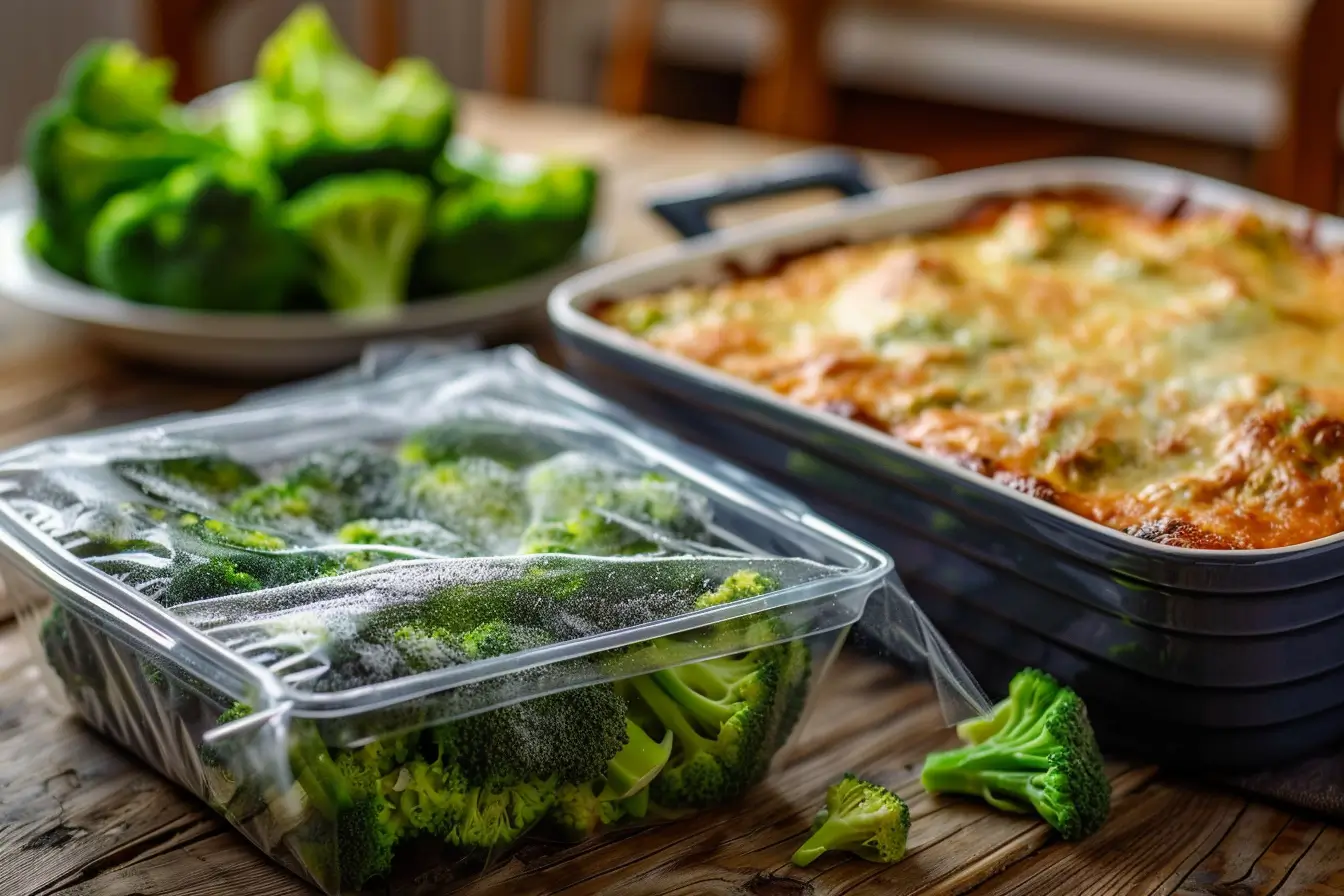Introduction
There’s nothing more comforting than a warm bowl of tortellini soup, but what if it’s too thin and watery? A rich, hearty soup should have the perfect consistency—creamy yet not overly thick, smooth but not too runny. If you’ve ever asked yourself, “How do you thicken tortellini soup?”, you’re in the right place!
In this guide, we’ll explore the best ways to thicken tortellini soup, why it sometimes turns out watery, and quick fixes to get the perfect consistency every time. Whether you prefer a traditional thickening method or a creative twist, we’ve got you covered!
“Soup thickening is an art—too much, and it turns into stew; too little, and it feels like flavored water.”
Why Is Your Tortellini Soup Too Watery? Common Mistakes
Before we jump into fixing the problem, let’s understand why your tortellini soup might be too thin in the first place. Identifying the cause will help you choose the best thickening method.
Too Much Liquid Can Make Tortellini Soup Thin
Sometimes, adding too much broth or water can result in a thinner soup. If the recipe calls for 4 cups of broth but you add 6, expect a less creamy consistency.
Ingredients Didn’t Absorb Enough Liquid
Some ingredients, like tortellini and vegetables, naturally absorb liquid over time. However, if they don’t soak up enough, your soup might remain too watery.
Not Enough Thickening Agents in Tortellini Soup
Many soups rely on ingredients like dairy, flour, or potatoes to add body. If you skip these, your soup may end up thinner than expected.
High Water Content in Vegetables
Vegetables like tomatoes, zucchini, and mushrooms release a lot of water when cooked. If you don’t account for this, it can dilute your soup.
How Do You Thicken Tortellini Soup? 10 Best Methods
Now that we know what causes a thin soup, let’s go over the best ways to thicken it up.

1. Simmering Uncovered to Thicken Tortellini Soup Naturally
The easiest way to thicken soup is to let it simmer uncovered. This allows excess liquid to evaporate, naturally thickening the broth. Stir occasionally to prevent burning.
2. Adding a Slurry (Cornstarch or Flour)
A slurry is a mixture of water and a thickening agent like cornstarch or flour. Here’s how to do it:
- Mix 2 tablespoons of cornstarch or flour with 1/4 cup of cold water.
- Stir until smooth, then add to the soup.
- Simmer for a few minutes until the soup thickens.
3. Using Heavy Cream or Dairy Products
Adding heavy cream, sour cream, or even Greek yogurt gives your soup a rich texture. Stir in a little at a time and taste as you go.
4. Adding Mashed Potatoes or Potato Flakes
Mashed potatoes work wonders for thickening soup without altering the flavor. Instant potato flakes are another quick fix—just sprinkle some in and stir.
5. Mixing in a Roux
A roux is a combination of butter and flour cooked together. To make it:
- Melt 2 tablespoons of butter in a pan.
- Add 2 tablespoons of flour and stir until golden.
- Whisk into your soup for a smooth, velvety texture.
6. Blending a Portion of the Soup
For a naturally thickened soup, remove a cup of the broth and blend it until smooth. Then, return it to the pot and stir.
7. Using Egg Yolks for a Creamier Texture
Whisk an egg yolk with a little soup broth, then slowly stir it back into the pot. This method creates a luxurious, silky texture.
8. Adding Cheese to Thicken Tortellini Soup
Cheese not only thickens soup but also enhances flavor. Grated Parmesan or shredded cheddar work great—just sprinkle and stir.
9. Incorporating Beans or Lentils
Puréed beans or lentils add thickness while keeping the soup healthy. Blend some up and mix them in.
10. Using Bread Crumbs or Stale Bread
Adding torn bread pieces or breadcrumbs soaks up extra liquid, making the soup thicker and heartier.
How to Fix Tortellini Soup That Is Too Watery
If you need an instant fix, try these:
- Sprinkle instant mashed potatoes – Works in seconds.
- Add a cornstarch slurry – Thickens immediately.
- Throw in some cheese – Melts and adds body.
- Let it simmer – Reduces excess water.
How to Keep Tortellini from Getting Mushy in Soup
Cooking Tortellini Separately
One of the best ways to prevent mushy tortellini is to cook it separately and add it to the soup just before serving.
Choosing Fresh vs. Frozen Tortellini
Fresh tortellini cooks faster than frozen, so be mindful of cooking times. Overcooking leads to a mushy texture.
Timing Matters: When to Add Pasta to Soup
Add tortellini in the last 5-10 minutes of cooking to keep it firm. If reheating, store pasta separately and mix before serving.
Mistakes to Avoid When Thickening Tortellini Soup
Over-Thickening and Losing the Right Texture
Adding too much thickener can turn your soup into a paste. Always add gradually and stir well.
Using Too Many Ingredients That Change the Flavor
Some thickeners, like beans or potatoes, can alter the taste. If you’re aiming for a specific flavor, choose a neutral thickening agent.
Frequently Asked Questions (PAA)
How to thicken tortellini soup?
You can thicken tortellini soup by simmering it, adding a cornstarch slurry, mixing in mashed potatoes, or stirring in cheese or cream.
How to fix soup that is too watery?
Fix a watery soup by reducing the liquid, adding a roux, using instant mashed potatoes, or stirring in a thickening agent like flour or cornstarch.
How do I make my soup thicker?
Thicken your soup by blending part of it, adding dairy, using a slurry, or incorporating breadcrumbs or beans.
How do you keep tortellini from getting mushy in soup?
Cook tortellini separately and add it just before serving to keep it from getting mushy. Also, avoid overcooking by following package instructions.
Conclusion & Final Tips
Thickening tortellini soup is easy once you know the right methods. Whether you simmer, add a thickening agent, or blend part of the soup, you can achieve the perfect consistency every time. Experiment with different techniques to find your favorite!
“A great tortellini soup isn’t just about taste—it’s about texture. Find the balance, and every spoonful will be a delight!”
More Ways to Thicken Tortellini Soup
In addition to the methods already mentioned, there are a few more techniques that can help you achieve a thick and creamy tortellini soup without altering its flavor too much.
Using Butter for a Silky Texture
Butter not only adds richness but also helps bind the soup’s ingredients together. Adding a few tablespoons of cold butter at the end of cooking can give the soup a smooth and velvety texture.
Mixing in Coconut Milk
For a dairy-free thickening option, coconut milk is an excellent alternative. It provides a creamy consistency while adding a subtle sweetness that pairs well with tortellini soups containing vegetables or mild seasonings.
Adding Nuts for Natural Thickness
Blended cashews or almonds can work as natural thickeners. Soak the nuts in warm water, blend them into a paste, and stir into the soup for a rich, nutty depth of flavor.
Using Tomato Paste for a Thicker Base
Tomato paste is a concentrated ingredient that not only thickens but also enhances the overall flavor. If your tortellini soup has a tomato-based broth, stirring in a tablespoon or two of tomato paste can give it a thicker, richer consistency.
Common Thickening Mistakes and How to Avoid Them
Overusing Flour or Cornstarch
While flour and cornstarch are great thickeners, using too much can make the soup overly dense and pasty. The key is to start small—use a teaspoon at a time, then adjust as needed.
Adding Too Many Thickening Agents at Once
Layering multiple thickening methods, such as flour, cheese, and heavy cream, can result in a soup that is too thick and heavy. Choose one or two methods based on the desired consistency.
Not Stirring Properly
Failing to mix thickening agents well can cause lumps or an uneven texture. Always whisk ingredients like flour, cornstarch, or roux before adding them to the soup.
Cooking at Too High a Temperature
Some thickening agents, such as dairy and egg yolks, can curdle if added to a soup that is too hot. To prevent this, always add these ingredients at a low simmer and stir continuously.
How to Adjust the Flavor After Thickening
Sometimes, thickening a soup can slightly alter its taste. Here’s how to maintain the right balance:
- If the soup becomes too bland – Add salt, pepper, or a splash of vinegar to restore depth.
- If the soup is too rich – A squeeze of lemon juice can cut through excess creaminess.
- If the soup feels too heavy – Add fresh herbs like basil or parsley for brightness.
How Long Can Thickened Tortellini Soup Be Stored?
Refrigeration Guidelines
Thickened tortellini soup can be stored in an airtight container in the refrigerator for up to 3 to 4 days. Keep in mind that soups containing dairy or flour-based thickeners may continue to thicken as they sit.
Freezing Considerations
Soups thickened with dairy or cornstarch may not freeze well, as the texture can change upon reheating. If planning to freeze, consider thickening the soup after reheating rather than before storage.
Reheating Thickened Tortellini Soup Without Losing Texture
Reheating soup the wrong way can cause it to separate or become too thick. Here’s how to do it properly:
- Stovetop Method – Heat the soup over low to medium heat, stirring frequently. If the soup has thickened too much, add a splash of broth or milk to loosen it.
- Microwave Method – Heat in 30-second intervals, stirring between each to maintain a smooth consistency.
Frequently Asked Questions (PAA)
How to thicken tortellini soup?
The best ways to thicken tortellini soup include simmering to reduce liquid, adding a cornstarch or flour slurry, using heavy cream, or incorporating mashed potatoes. You can also try blending part of the soup to achieve a naturally thicker consistency.
How to fix soup that is too watery?
If your soup is too watery, you can quickly fix it by using instant mashed potatoes, adding a roux, stirring in cheese, or letting it simmer uncovered to evaporate excess liquid. For more details on fixing thin soups, check out this detailed guide.
How do I make my soup thicker?
To make your soup thicker, consider blending part of it, using thickening agents like flour or cornstarch, or adding dairy such as heavy cream or cheese. If you prefer a natural method, using potatoes, lentils, or bread can also help.
How do you keep tortellini from getting mushy in soup?
The best way to prevent tortellini from getting mushy is to cook it separately and add it to the soup just before serving. Additionally, avoid overcooking and follow package instructions for the ideal cooking time.
Conclusion & Final Tips
Achieving the perfect consistency in tortellini soup is simple once you know the right methods. Whether you choose to simmer, add a thickener, or blend part of the soup, these techniques will help you create a rich, satisfying bowl every time.
Experiment with different approaches to find the best fit for your personal taste and dietary preferences. By mastering soup thickening techniques, you can ensure that every bowl of tortellini soup is just as comforting and delicious as you envision.
“Great soup is not just about flavor—it’s about the perfect balance of thickness, richness, and texture.”








